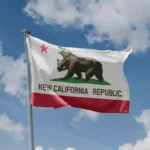The year 1966 was a pivotal moment in Brazil’s history, marked by significant political, economic, and cultural developments. This period was characterized by the consolidation of the military regime that had taken power in 1964, the implementation of economic policies that would shape the country’s future, and vibrant cultural expressions that reflected the complexities of Brazilian society. This article delves into the key events and trends of Brazil 1966, providing a comprehensive overview of this transformative year.
Political Landscape
The political landscape of Brazil in 1966 was dominated by the military regime that had ousted President João Goulart in a coup d’état on March 31, 1964. The coup marked the beginning of a 21-year military dictatorship, which sought to suppress leftist movements and implement a conservative agenda. By 1966, the regime was solidifying its control over the country, and the political climate was tense.
1. Institutional Act Number Two (AI-2)
One of the most significant political developments in 1966 was the introduction of Institutional Act Number Two (AI-2) on October 27, 1965. AI-2 granted the military government extensive powers, including the ability to dissolve political parties and hold indirect elections for the presidency. This act effectively dismantled the existing party system, paving the way for a two-party system dominated by the pro-government National Renewal Alliance (ARENA) and the opposition Brazilian Democratic Movement (MDB).
2. Presidential Elections
The first indirect presidential elections under the new system took place in 1966, Brazil. Marshal Artur da Costa e Silva, a key figure in the 1964 coup and a member of ARENA, was elected President. Costa e Silva’s election marked the continuation of military rule and set the stage for further authoritarian measures.
3. Repression and Censorship
The military regime intensified its efforts to suppress dissent in 1966. Political repression, censorship, and the curtailment of civil liberties became hallmarks of the period. The regime targeted leftist groups, intellectuals, and students who opposed its policies. The repressive measures included arbitrary arrests, torture, and censorship of the press and artistic expressions.
Economic Policies and Development
The economic policies of the military government in 1966 were aimed at stabilizing the economy, promoting industrialization, and attracting foreign investment. These policies had a profound impact on Brazil economic landscape.
1. Economic Stabilization
In 1966, Brazil was grappling with inflation and economic instability. The military government implemented a series of measures to stabilize the economy, including wage controls, price controls, and fiscal austerity. These measures were part of the Plano de Ação Econômica do Governo (Government Economic Action Plan), which aimed to curb inflation and restore economic confidence.
2. Industrialization and Foreign Investment
The regime pursued a policy of industrialization, emphasizing the development of key sectors such as steel, petrochemicals, and automotive manufacturing. To attract foreign investment, the government offered incentives to multinational corporations, leading to an influx of foreign capital. This period saw the establishment of numerous industrial projects and the expansion of infrastructure.
3. Social Inequality
Despite the focus on economic growth, the benefits of these policies were not evenly distributed. Social inequality remained a significant issue in Brazil in 1966. The urban poor and rural populations continued to face challenges such as inadequate housing, limited access to education, and poor healthcare. The military government’s policies often prioritized industrial development over social welfare.
Cultural Vibrancy
The cultural scene in Brazil in 1966 was vibrant and diverse, reflecting the complexities of Brazilian society. Music, literature, and the arts flourished, even under the constraints of censorship and political repression.
1. Tropicália Movement
One of the most influential cultural movements of the time was Tropicália, which emerged in the late 1960s. Tropicália was characterized by its fusion of traditional Brazilian music with elements of rock, psychedelia, and avant-garde art. Key figures in the movement included musicians Caetano Veloso and Gilberto Gil, who challenged conventional norms and addressed political and social issues through their work.
2. Cinema Novo
Cinema Novo, a Brazilian film movement, continued to gain prominence in 1966. This movement sought to depict the realities of Brazilian society, often focusing on themes of poverty, social injustice, and political corruption. Directors such as Glauber Rocha and Nelson Pereira dos Santos produced films that garnered international acclaim and highlighted the struggles of the Brazilian people.
3. Literature and Theatre
Brazilian literature and theatre also thrived during this period. Writers like Jorge Amado and Clarice Lispector published works that explored the complexities of Brazilian identity and social issues. The theatre scene was dynamic, with playwrights like Augusto Boal and Gianfrancesco Guarnieri using their works to critique the political regime and advocate for social change.
Sports and National Pride
Sports played a significant role in shaping national identity and fostering a sense of pride among Brazilians in 1966. Football (soccer) was particularly influential, and the Brazilian national team was a source of immense national pride.
1. The 1966 FIFA World Cup
The 1966 FIFA World Cup held in England was a major event for Brazil. The Brazilian national team, led by legendary players like Pelé and Garrincha, entered the tournament as one of the favorites, having won the previous two World Cups in 1958 and 1962. However, the team faced unexpected challenges and was eliminated in the group stage after defeats to Hungary and Portugal. The early exit was a disappointment for the nation, but it did not diminish the country’s passion for football.
2. Domestic Football
On the domestic front, the Brazilian football league continued to grow in popularity. Clubs like Santos, Botafogo, and Palmeiras boasted talented squads and entertained fans with their skillful play. The domestic league served as a breeding ground for future stars who would go on to represent Brazil on the international stage.
Social Movements and Civil Society
Despite the repressive political climate, social movements and civil society organizations continued to play a crucial role in advocating for change and addressing pressing social issues.
1. Student Movement
The student movement was particularly active in 1966. University students organized protests and demonstrations against the military regime, demanding greater political freedom and social justice. The National Union of Students (UNE) was a key organization in mobilizing student activism and challenging the government’s policies.
2. Labor Movement
The labor movement also remained a significant force in Brazilian society. Workers organized strikes and protests to demand better wages, working conditions, and labor rights. The military regime’s economic policies often led to tensions between labor unions and the government, resulting in clashes and repression.
3. Women’s Movement
The women’s movement in Brazil gained momentum during this period, advocating for gender equality and women’s rights. Organizations like the Brazilian Federation for Women’s Progress (FBPF) worked to address issues such as gender-based violence, reproductive rights, and equal opportunities for women in education and employment.
International Relations
Brazil’s foreign policy in 1966 was shaped by the Cold War dynamics and its relationships with major global powers. The military regime sought to navigate the complex international landscape while pursuing its national interests.
1. Alignment with the United States
The military government maintained a close alignment with the United States, which supported the regime as a bulwark against communism in Latin America. The U.S. provided economic and military aid to Brazil, strengthening the bilateral relationship. This alignment influenced Brazil’s stance on international issues and its participation in regional organizations such as the Organization of American States (OAS).
2. Relations with Latin American Neighbors
Brazil’s relations with its Latin American neighbors were characterized by a mix of cooperation and competition. The country played a leading role in regional organizations and initiatives aimed at promoting economic integration and political stability. However, tensions occasionally arose with neighboring countries over territorial disputes and differing political ideologies.
3. Non-Aligned Movement
Despite its alignment with the United States, Brazil also sought to maintain a degree of independence in its foreign policy. The country participated in the Non-Aligned Movement, a group of states that sought to remain neutral in the Cold War rivalry between the U.S. and the Soviet Union. Brazil’s involvement in the movement reflected its desire to balance its international relationships and assert its sovereignty.
Conclusion
The year 1966 was a transformative period in Brazil’s history, marked by significant political, economic, and cultural developments. The consolidation of the military regime, the implementation of economic policies, and the vibrant cultural expressions of the time all contributed to shaping the nation’s trajectory. Despite the challenges and repression, Brazilian society demonstrated resilience and creativity, laying the groundwork for future progress and change. As we reflect on this pivotal year, it is evident that the events of 1966 continue to resonate in Brazil’s contemporary landscape, influencing its political, economic, and cultural evolution.







